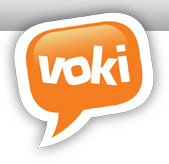
My Reflection
Reaching and Engaging All Learners Through Technology has been a very informative course for me. This course has taught me different strategies to integrate differentiated instruction in my daily lessons. Using technology in my classroom is a passion for me, and I get totally immersed in my work when I have to make lesson plans that include technology. Technology is revolutionizing the world, and this generation of students that we teach is considered digital natives, and we are considered the digital immigrants who need to catch up to them. Web 2.0 tools are excellent tools that can help students reach their potential. (Singh, 2011). Technology integration helps teachers facilitate the conducting of a differentiated instruction by readiness, interest, and learning profile. “Differentiation provides students with varied experiences to engage with content. A differentiated classroom offers multiple ways for students to access content, to process and make sense of the concepts and skills, and to develop products that demonstrate their learning (Tomlinson, 2001).
Immediate adjustments that I plan to make in my instructional practice with technology integration are differentiating instruction by content, process, and product. “Differentiating content requires that students are pre-tested so the teacher can identify the students who do not require direct instruction. Differentiating by processes means activities or strategies that are varied to provide appropriate methods for students to learn. Differentiating by product means that students create products of varying complexity” (Davidson, 2009). I rarely used to keep these three strategies in mind while writing my lesson plans, but after reflecting on the course and learning about universal design for learning, along with differentiated instruction, I believe that it is not difficult to customize instruction. Teachers have to just be aware of the benefits of universal design for learning and differentiated instruction. During our PLC meetings, I plan to collaborate with our grade level teachers and customize instruction that would benefit the students. I have also set up a collaboration blog http://lpcollaboration.blogspot.com/. It is good to collaborate “with them regularly, ask for time to spend in one another’s classroom, plan together, troubleshoot as a team, share lessons and materials, and take turns teaching and watching as peer coaches. The synergy from such collegial partnerships can be one of the most amazing benefits of a job that all too often is isolating (Tomlinson, 1999. p.105). One of the changes that I have implemented is modifying of the learning environment to meet the needs of diverse learners. This is done by arranging the desks in collaborative groups. I have also organized the classroom so that everything in my classroom has a place and purpose. On the bookshelves there are materials that reflect a variety of cultural books and materials that would catch student’s interests (Singh, 2011).
My efforts at creating and implementing differentiated assessments and lesson plans are to have a plan on how to execute differentiation in my classroom. I intend to differentiate my instruction by readiness, interest, and learning profile of my students. “To differentiate instruction is to recognize students' varying background knowledge, readiness, language, preferences in learning and interests; and to react responsively. The intent of differentiating instruction is to maximize each student's growth and individual success by meeting each student where he or she is and assisting in the learning process” (Hall, Strangman, & Meyer, 2011). To differentiate instruction by readiness would be to match instruction to students’ knowledge, understanding, and skill, and this in turn would help them to understand the concepts. The data that can be collected for readiness would be a pre-assessment survey that the students would take before starting a unit. Differentiating instruction by students’ interest would be by conducting a one-on-one interview with the students, in order to collect data on what their interests are relative to the lesson. “Students whose interests are tapped and deepened in school are more likely to be engaged and to persist in learning” (Tomlinson, 2003). Another way to adjust teaching and learning is to address my students’ multiple intelligences. Students could take a Multiple Intelligence Survey to find out how they learn best. This data would help guide me in modifying the lesson so that differentiated instruction would be provided to the students according to their learning profile. Combining all of this with the use of technology would be a very effective way to differentiate instruction.
In order to implement the universal design for learning and differentiated instruction strategies into my teaching, I would implement project-based learning strategies to help the diverse learners in my classroom. By using CAST’s lesson plan builder I would be able to “customize UDL lessons aligned to standards and tailored to include principles and practical applications of Universal Design for Learning” (CAST, 2011). Universal designs for learning and differentiated instruction complement each other, and implementing these strategies would certainly help in differentiating instruction to my students. Technology also helps in differentiating instruction in a classroom, and this interaction helps students learn in an effective manner. “Using technology in your classroom is a great way to ‘differentiate’ your instruction. One way to adjust teaching and learning is to address your students’ multiple intelligences” (Western, 1999).
Differentiating assessments is always a challenge for teachers. Teaching an inclusion class this year has made me aware of the need to use differentiated assessments in a classroom. “Technology based classroom assessments focus on the use of technology by teachers and students to create learning products, promote their technology skills, and examine students' strengths and challenges and the outcomes of daily classroom instructional and social activities” (Salend, 2009. p. 49). Differentiated assessments that could be used in a classroom are formative assessments (survey, observation, interviews) and summative assessments (surveys, written tests and blog/wiki responses). Giving many forms of assessments can help students to perform better and give them the flexibility to express themselves in different methods. “Robust learning generally requires robust teaching, and both diagnostic and formative assessments, or assessments for learning, are catalysts for better teaching. In the end, however, when assessment is seen as learning—for students as well as for teachers—it becomes most informative and generative for students and teachers alike” (Tomlinson, 2008. p. 8). Authentic assessment can also be used with students to help differentiate assessment. By following all the above strategies of differentiated assessments I am confident that I would be able to create and implement differentiated assessment and instruction in my classroom.
Technology integration in a classroom is essential to help meet the needs of diverse learners. The three ways that I plan to provide my students with instruction to meet their diverse needs are by using a classroom blog which would include many web 2.0 tools, Google docs to create surveys , and interactive games that would encourage students to learn the concepts at their own pace. The classroom blog is an excellent place to differentiate instruction. Students work on their own pace to complete assignments, and at the same time play interactive games to understand the content they are studying. My learning community offered numerous resources that helped integrate technology in the classroom. In one of the resources it states that, “Technology makes it possible to pace lessons appropriately for each student’s learning level and can be used to promote learning in multiple intelligences” (The Apple, 2011).
Moving forward in my program, I can confidently say that this course has given me the confidence that I can make a difference in the classroom. Collaboration among students and teachers is the key to everyone’s success. “Educators must pull together by sharing their work through collaboration, too much knowledge and too many skills are needed for any single professional to keep up with and master all of them” (Friend, & Pope, 2005. p.59). Learning about UDL, DI and technology integration has made me more aware of what I teach, and particularly the method that is applied to teach the students. When I write my lesson plans, I intend to scrutinize them to ensure that all the steps are taken. This is not a difficult or time-consuming process, and I need to make a conscious effort to integrate technology with universal design for learning and differentiated instruction to make a difference in my classroom.
References
CAST: CAST UDL Lesson Plan Builder. Retrieved on October 22, 2011 from http://lessonbuilder.cast.org/
Davidson, L. (n.d.). What parents need to know about differentiated instruction [Web log post]. Retrieved from http://hubpages.com/hub/What_Parents_Need_to_Know_About_Differentiated_
Friend, M., & Pope, K. (2005). Creating schools in which all students can succeed. Kappa Delta Pi Record, 41(2), 56–61. Retrieved from the Walden University Library using the Education Research Complete database.
Hall, T., Strangman, N., & Meyer, A. (2011). Differentiated instruction and implications for UDL implementation. Retrieved from http://aim.cast.org/learn/historyarchive/backgroundpapers/differentiated_instruction_udl
Salend, S. (2009). Technology-based classroom assessments. Teaching Exceptional Children, 41(6), 48–58. Retrieved from the Walden University Library using the Education Research Complete database.
Singh, P. (2011). Putting it Together. (Week 7 Discussion). Walden University
The Apple. (2011). Using Technology to Differentiate instruction. Retrieved on October 23, 2011 from http://theapple.monster.com/benefits/articles/8484-using-technology-to-differentiate-instruction
Tomlinson, C. (1999). Differentiated classroom: Responding to the needs of all learners. Alexandria , VA
Tomlinson, C. A. (2003). Fulfilling the Promise of the Differentiated Classroom. Alexandria , VA
Tomlinson, C. (2008). Learning to love assessment. Educational Leadership, 65(4), 8–13. Retrieved on October 23, 2011 from http://www.ascd.org/publications/educational-leadership/dec07/vol65/num04/Learning-to-Love-Assessment.aspx




